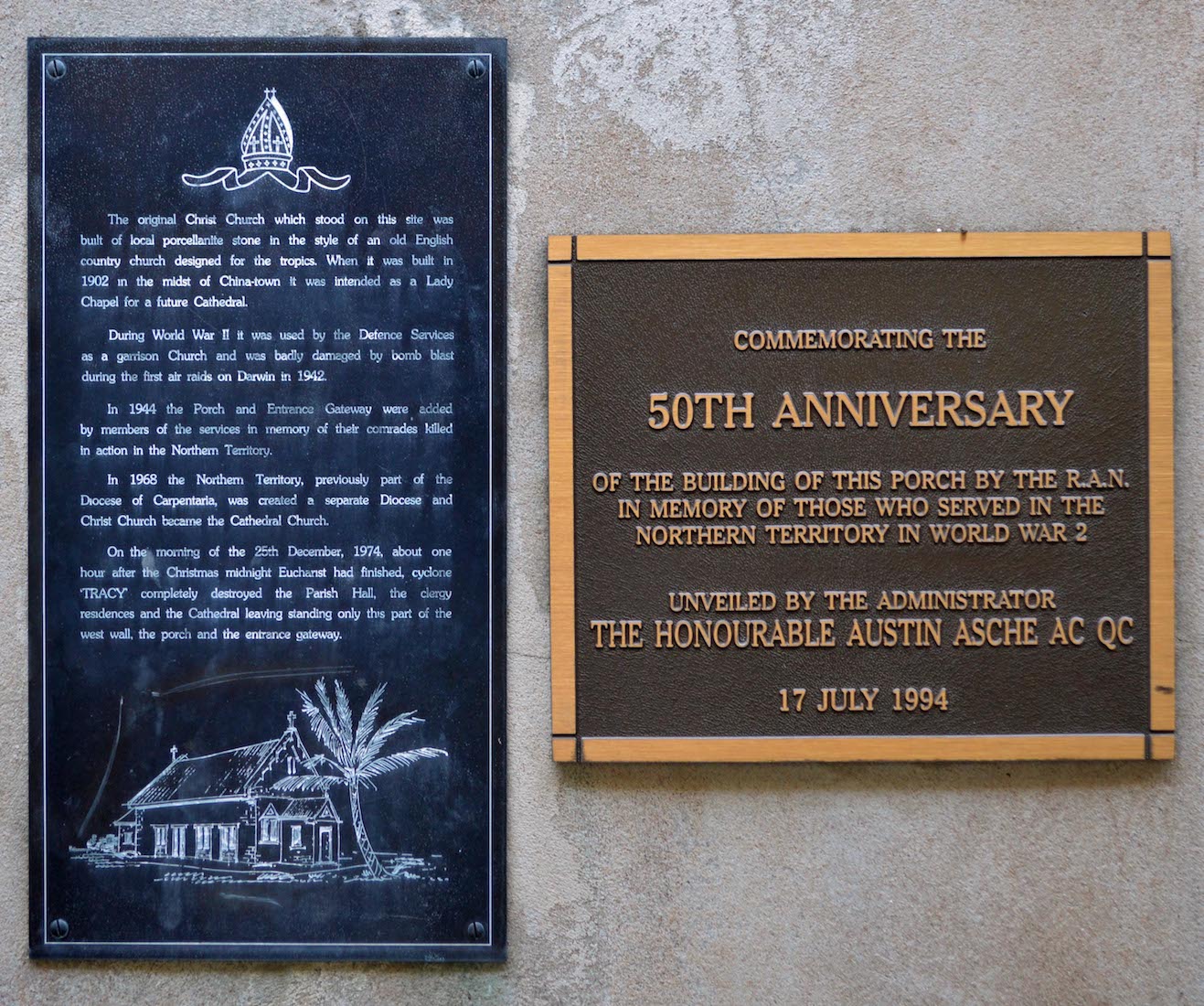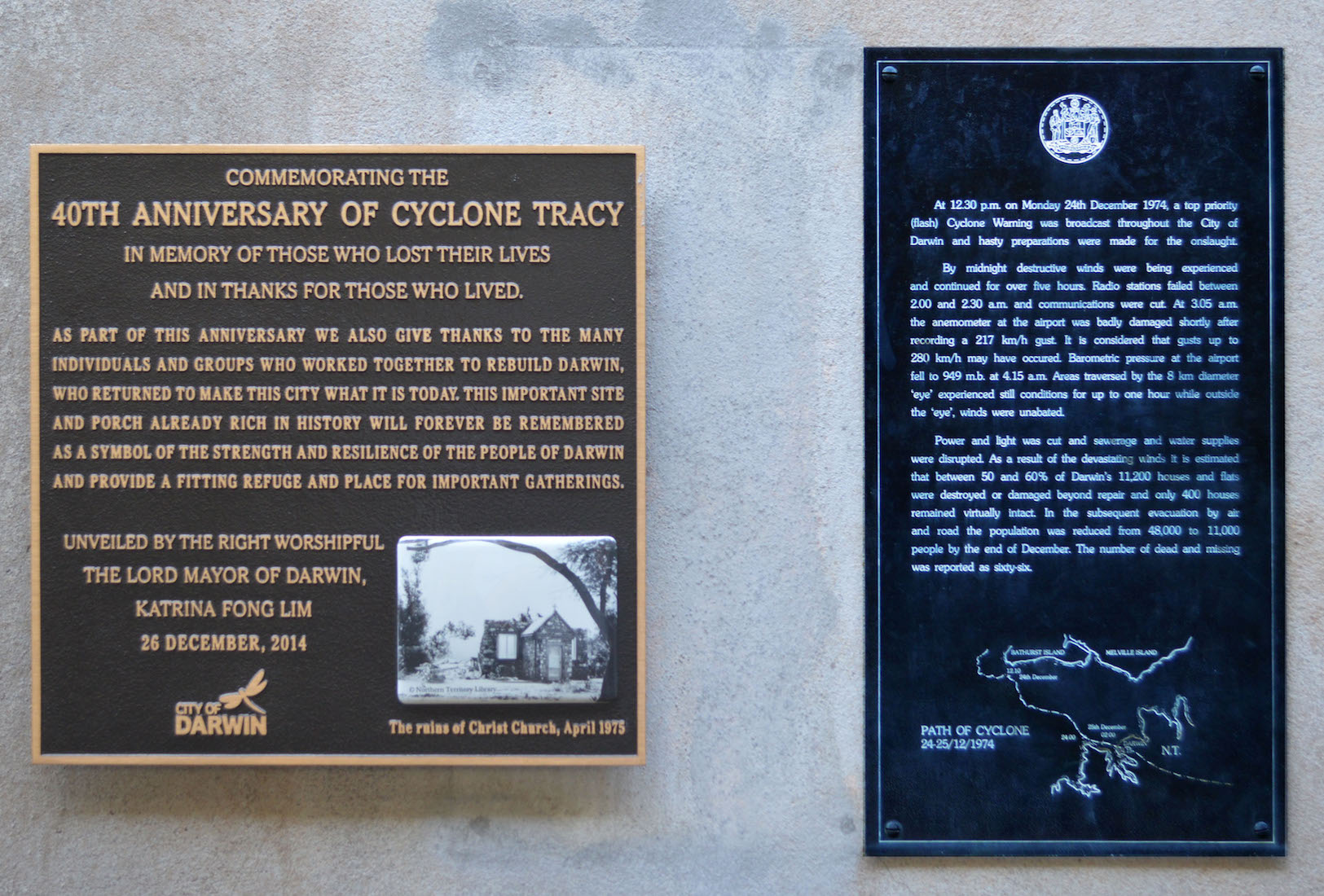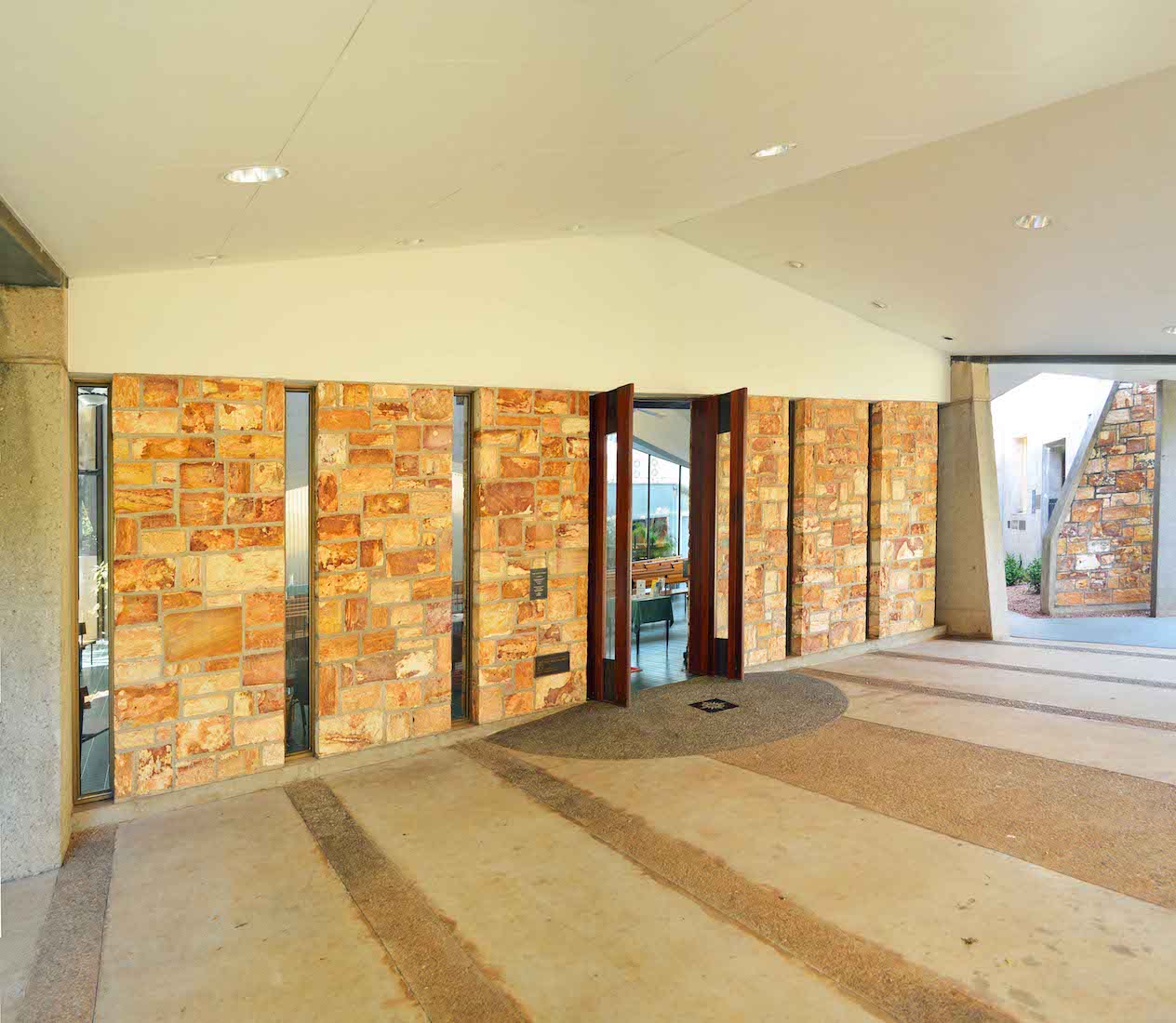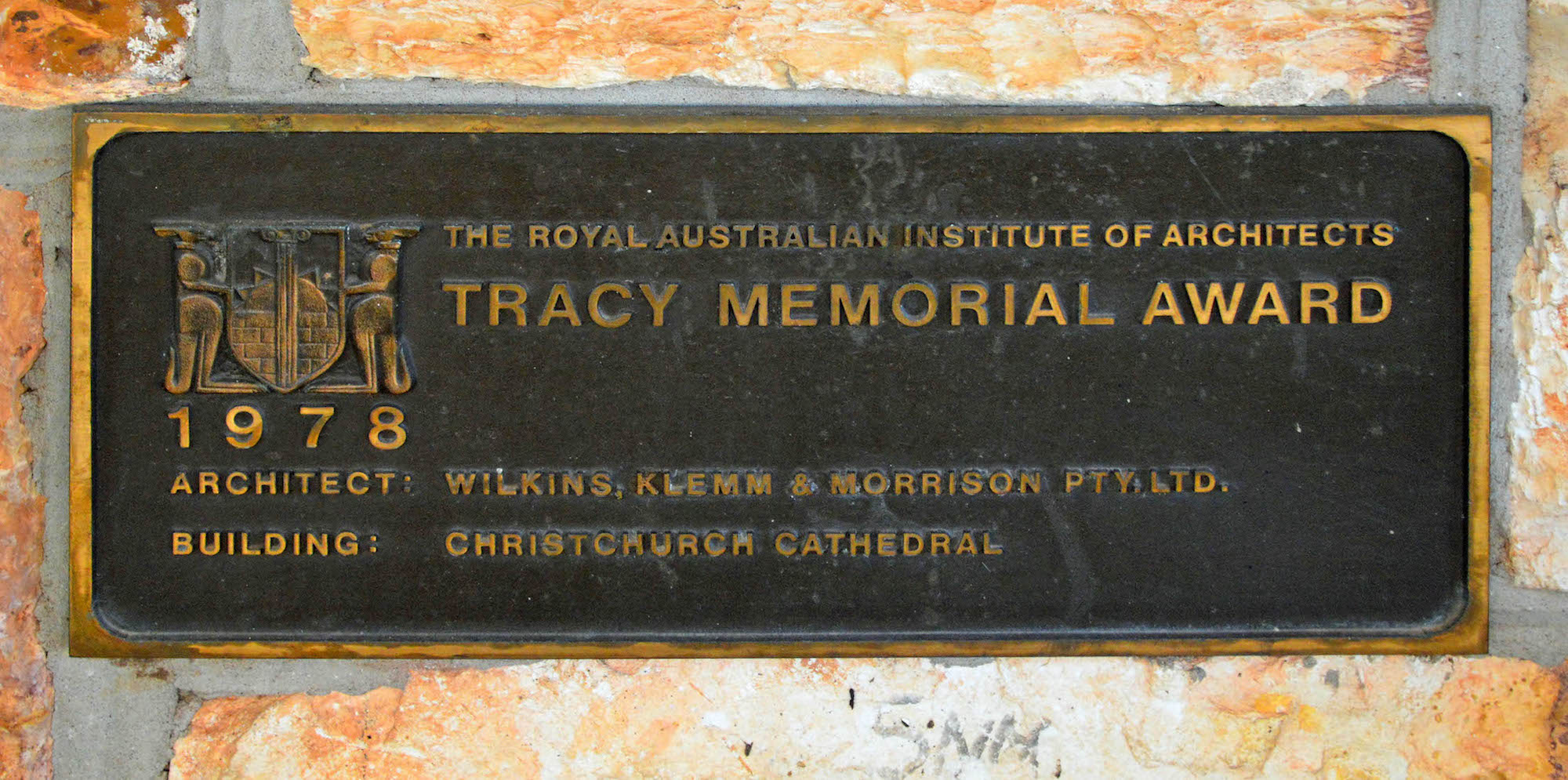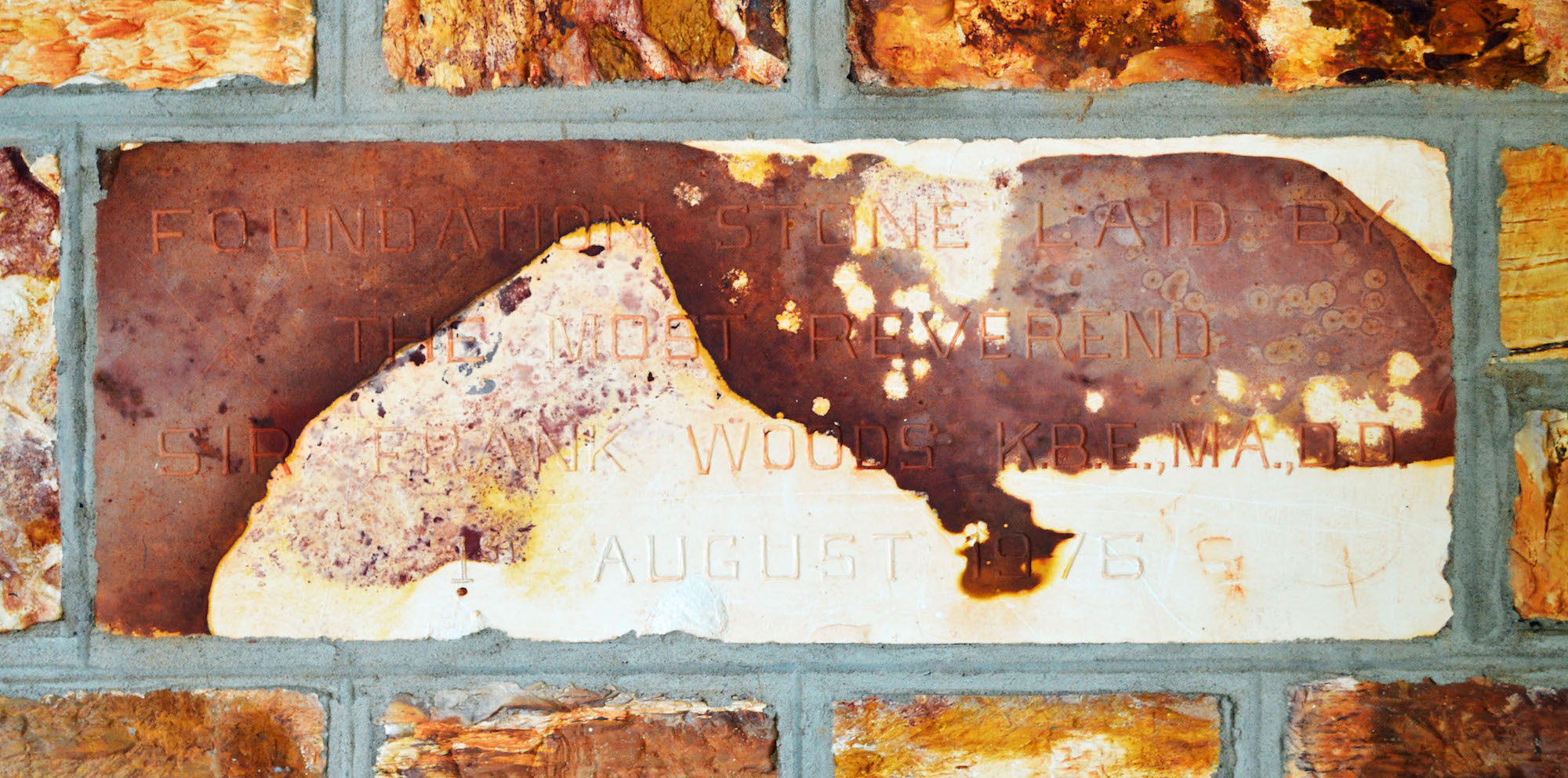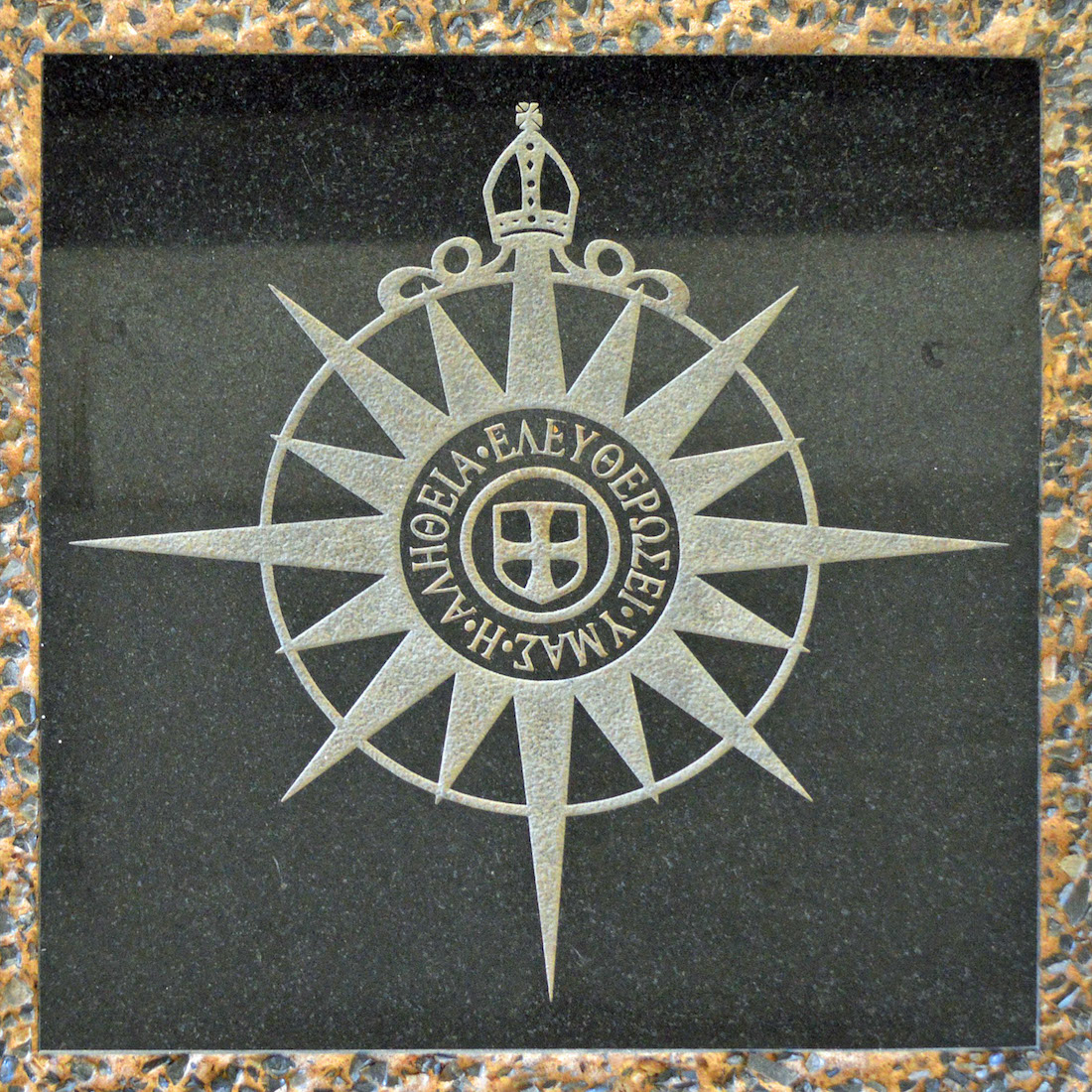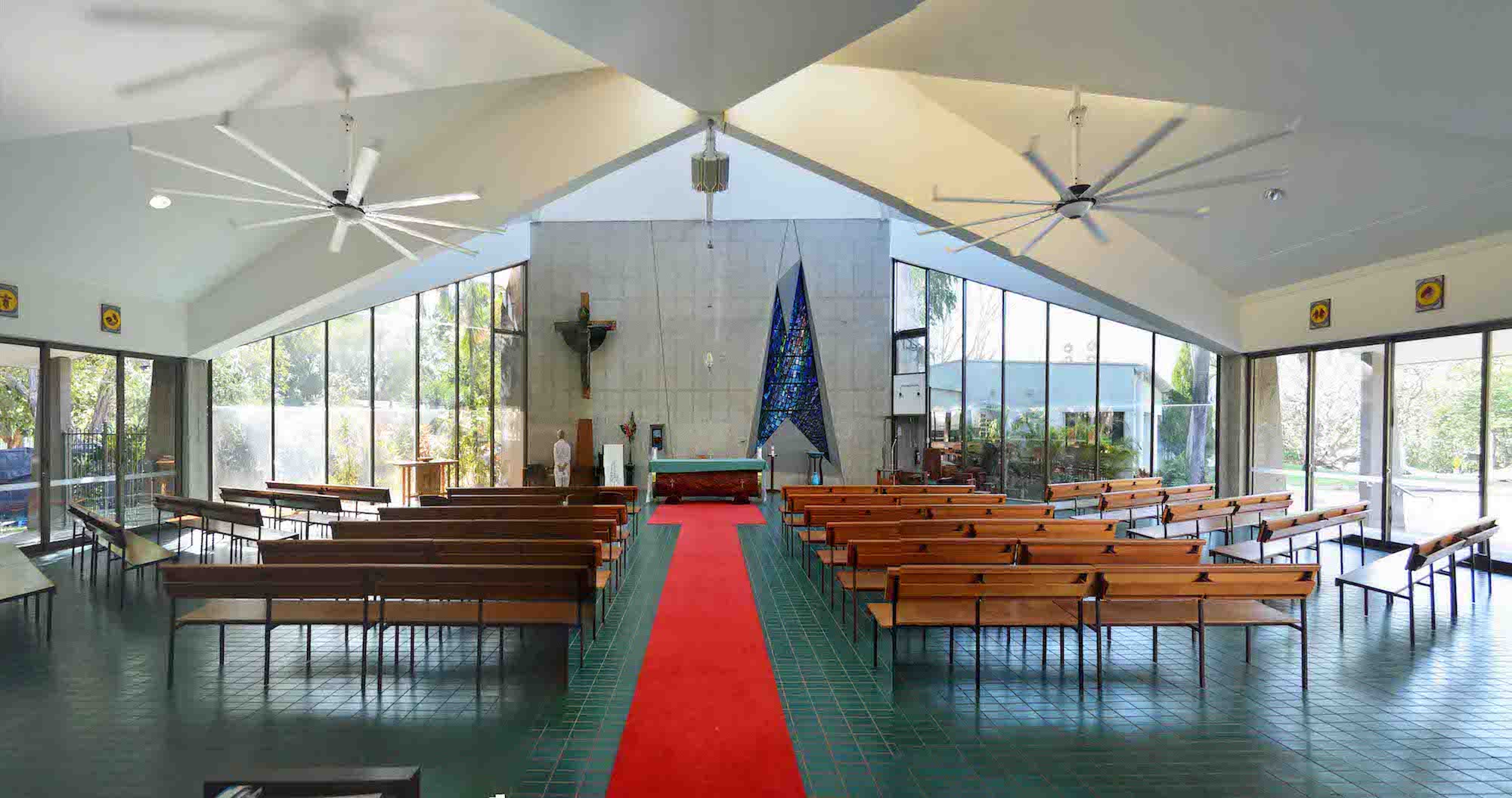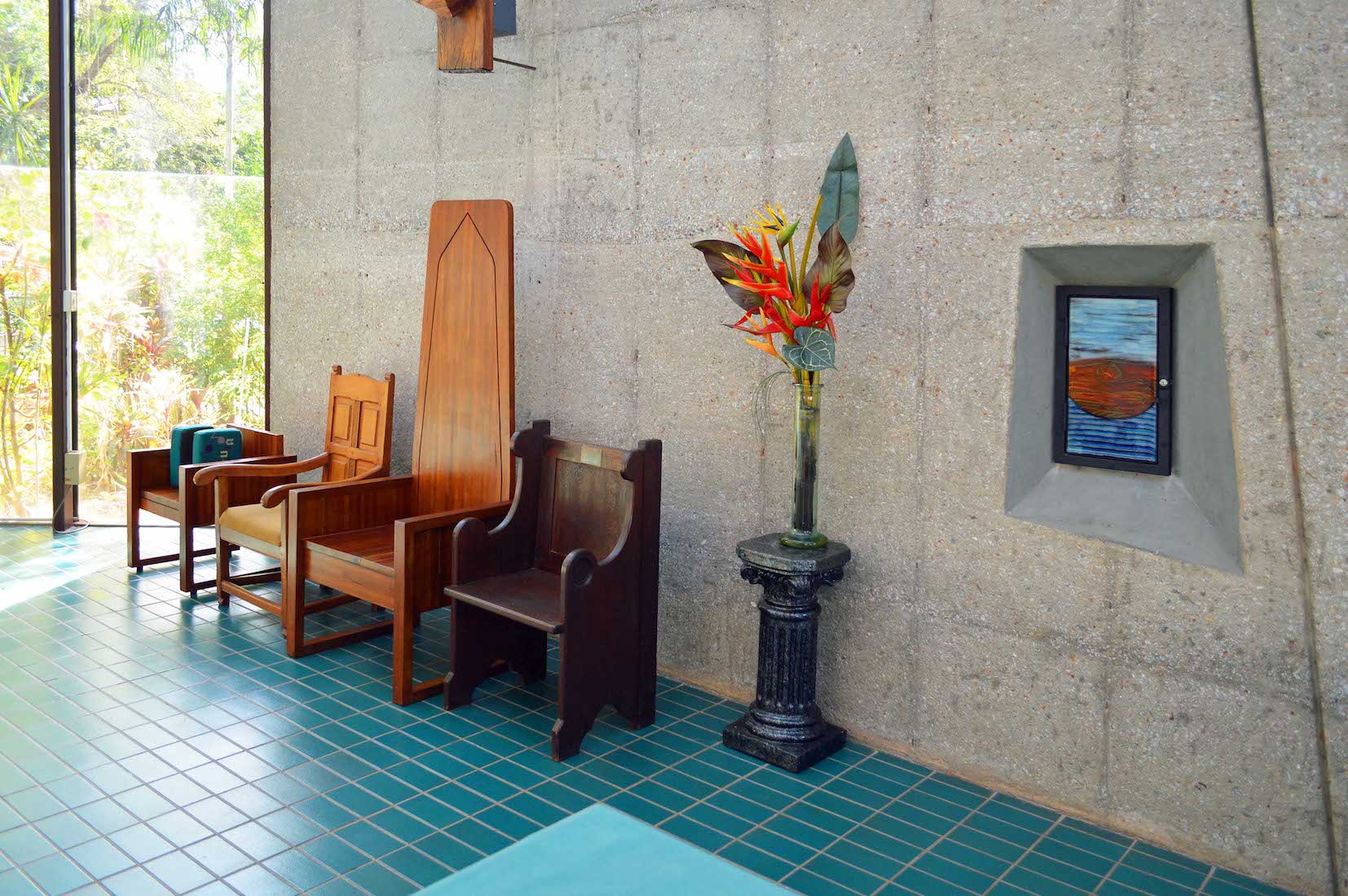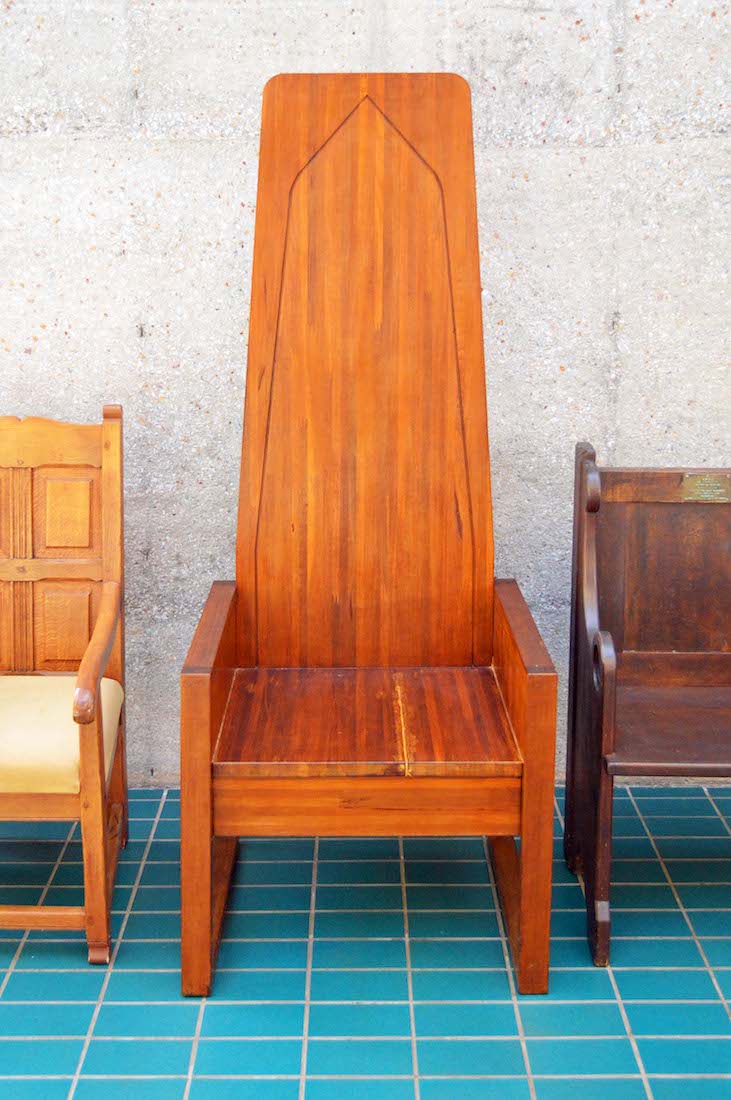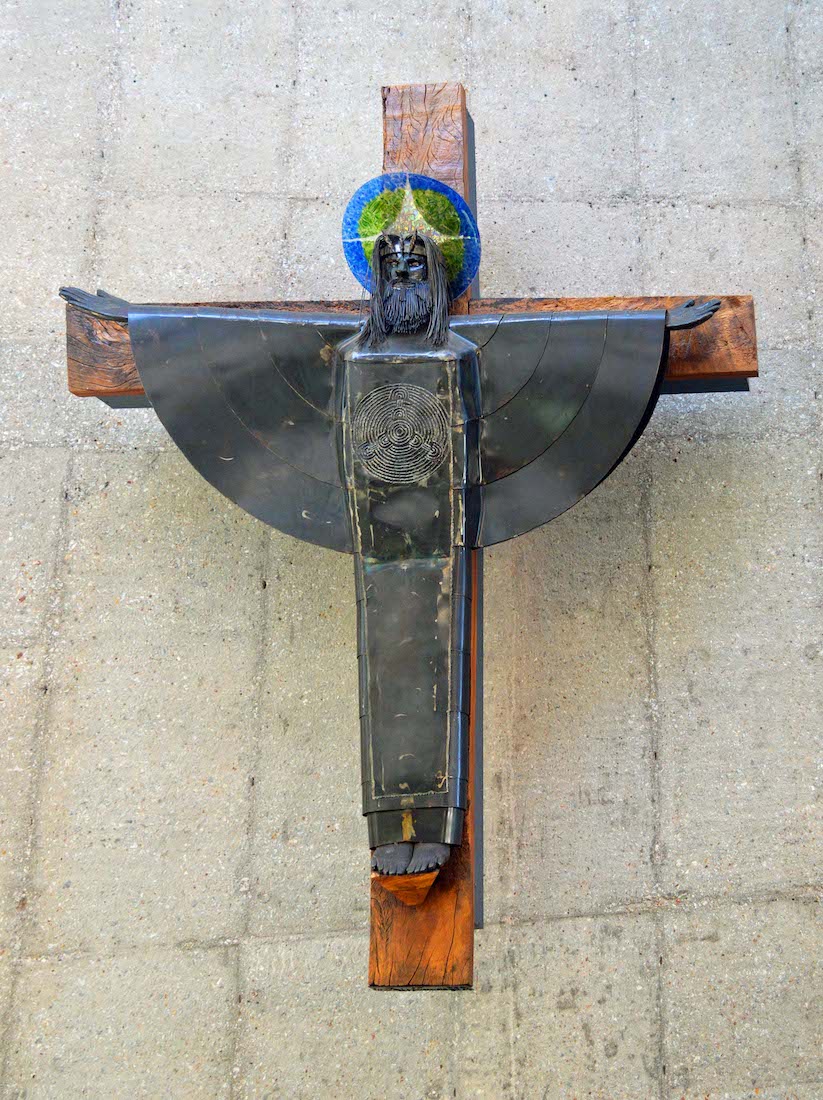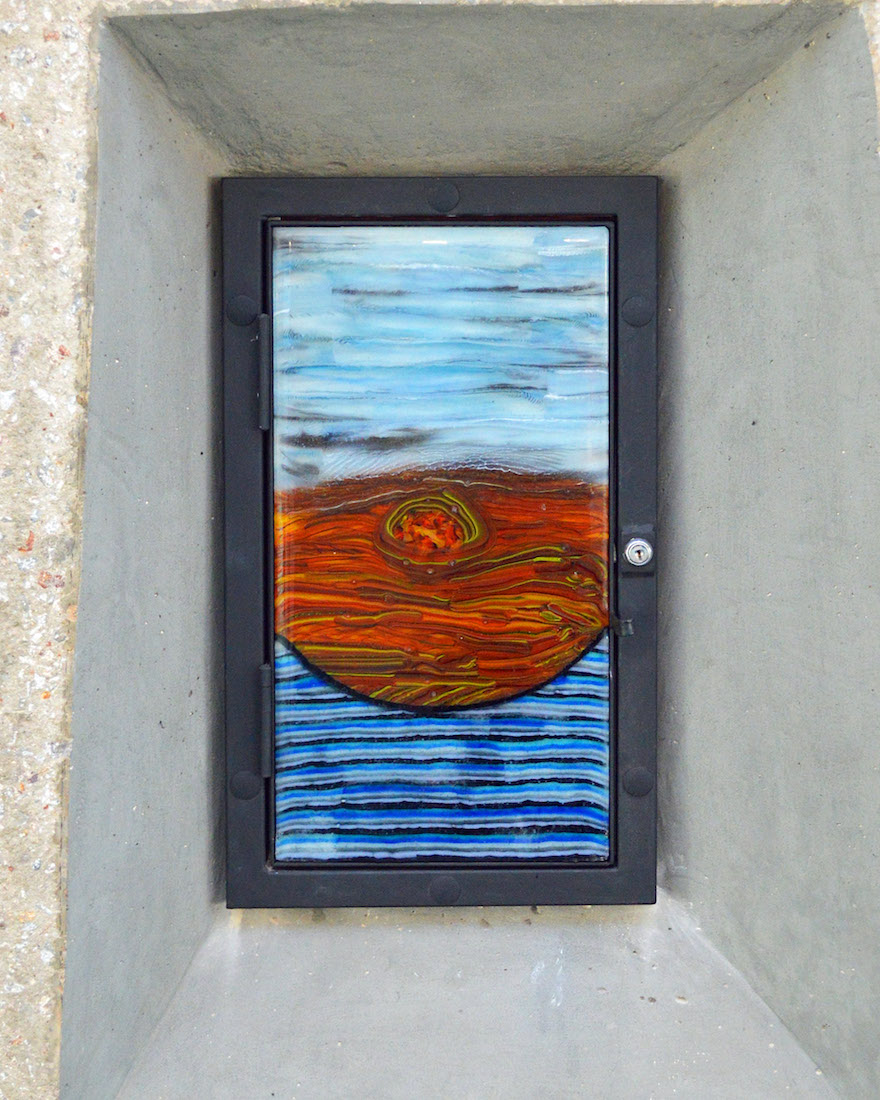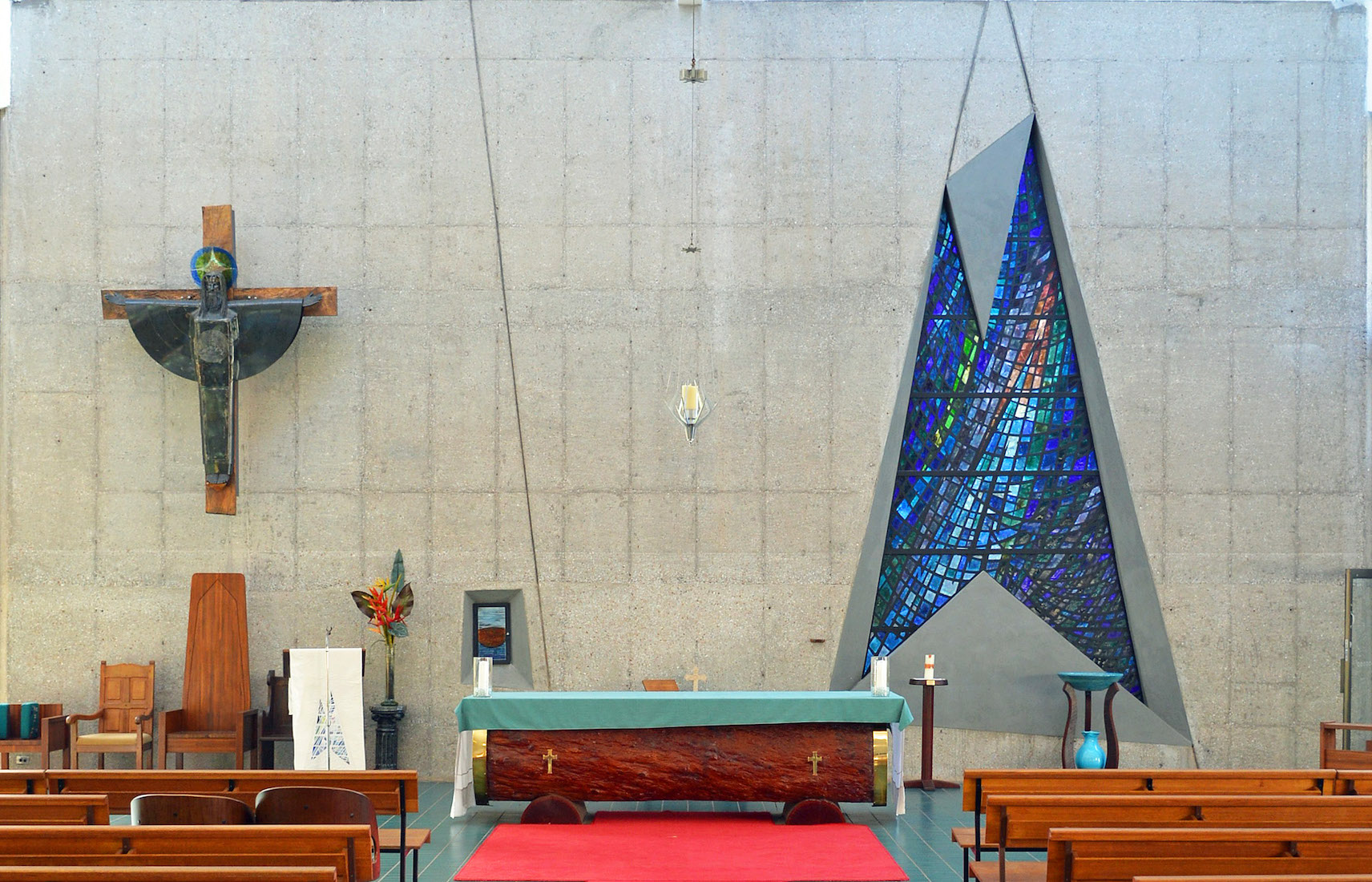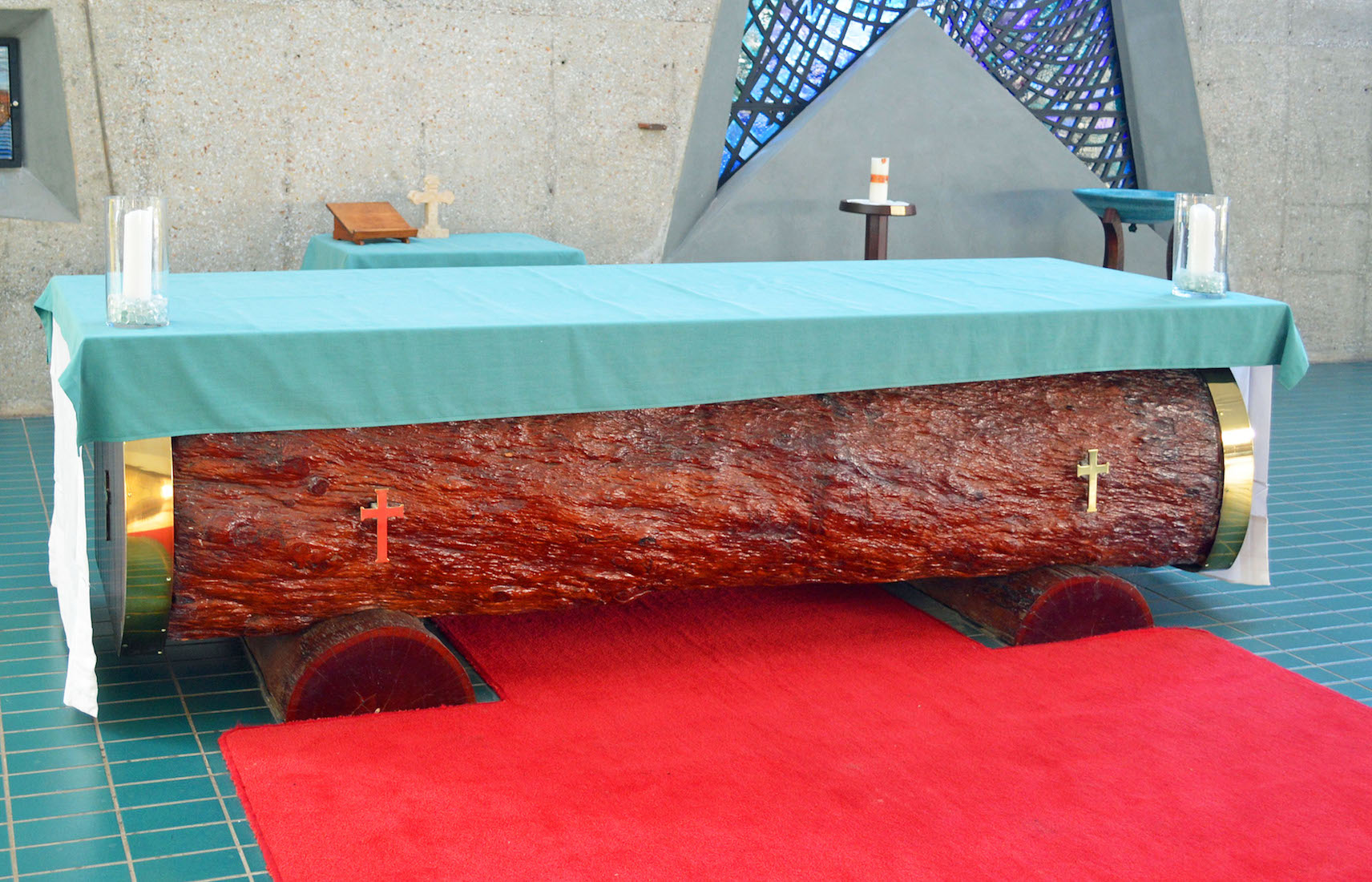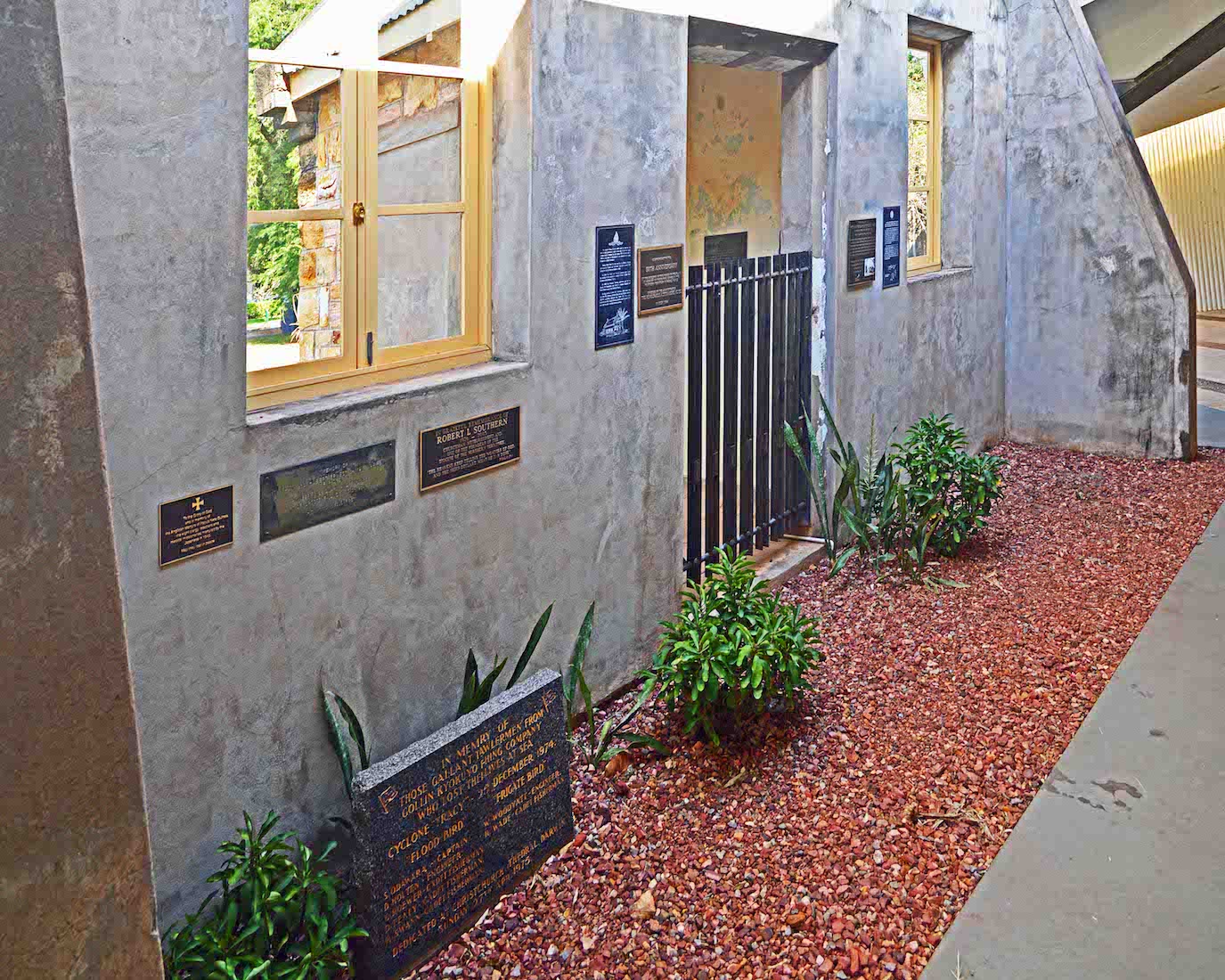
On the West side of the Cathedral and behind the ruins of the old Cathedral we find this neat little area with a collection of memorial plaques and stones. PLAN
22. TRAWLERMEN MEMORIAL
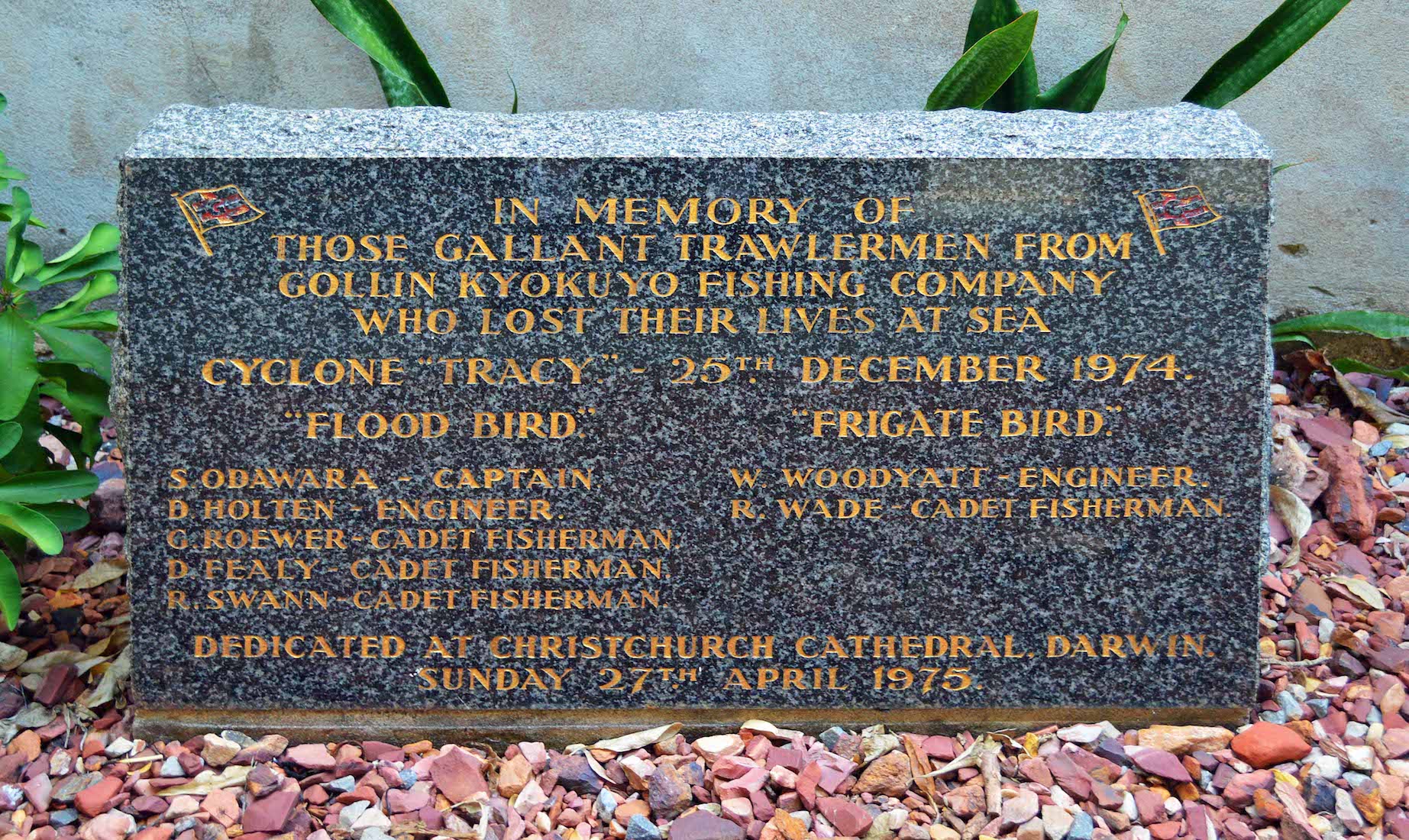
This interesting headstone is in memory of two crews of trawlermen from Gollin Kyoku Yo Fishing Company who lost their lives at sea during Cyclone Tracy in 1974. The boats were named ‘Flood Bird’ and ‘Frigate Bird’.
23. THREE PLAQUES
The left plaque remembers eight Anglican clergy, teachers, and medical missionaries who were martyred by the Japanese in Papua New Guinea in 1942. The central plaque remembers pioneer missionary and explorer The Reverend Hubert Ernest de May Warren F.R.G.S. of Groote Eylandt, 1913 – 1934. At right, Robert L. Southern, 1926 – 2003 is remembered. He was a churchman, meteorologist, and one of the founders of the Diocese of the Northern Territory.
24. HISTORY
The plaque at left gives a brief history of Christ Church Cathedral. The plaque at right commemorates the 50th Anniversary of the building of the Cathedral Porch by the R.A.N. in memory of those who served in the Northern Territory in WWII. The plaque was unveiled in 1994.
25. CYCLONE TRACY MEMORIALS
The left plaque commemorates the 40th Anniversary of Cyclone Tracy. The plaque at right gives a brief story of the happenings of that time. Darwin today has been shaped by the Japanese bombing of WWII and the events of Cyclone Tracy.
26. FOYER VIEW
We move now to the covered West foyer of the Cathedral. Behind us and to the right is a big bank of earth – the best protection from cyclones! And we are facing the West wall of the Cathedral with the West doors. We notice two black plaques on the wall on the near side of the door. Almost invisible on the far side is the foundation stone for the rebuilt Cathedral.
27. CONSECRATION PLAQUE
This plaque commemorates the consecration of the new Cathedral on Sunday 13th March 1977 by the First Bishop of the Northern Territory, The Rt Revd K. B. Mason B.A. Dip Theol. TH.L., in the presence of the Archbishop of Canterbury, The Most Revd and Rt Hon F. D. Coggan D.D.
28. CYCLONE TRACY AWARD
The small black plaque commemorates the Cyclone Tracy Award in 1978 by the Royal Australian Institute of Architects for the designing of Christ Church Cathedral by architects Wilkins, Klemm and Morrison Pty. Ltd.
29. FOUNDATION STONE
This foundation stone is found in the foyer area. It is almost illegible, but reads: Foundation stone laid by The Most Reverend Sir Frank Woods K.B.E., M.A., D.D. 1st August 1976. So it was with this stone that the rebuilding of the Cathedral began after the devastation of Cyclone Tracy.
30. COMPASS ROSE
Set in the pavement at the main entrance is a Compass Rose, the identifying symbol of the Anglican Communion. At centre is the Cross of St George, surrounded by the Greek text ‘The Truth shall make you free’ (Jn 8:32). The compass recalls the spread of Anglican Christianity throughout the world. The mitre at the top emphasises the role of the episcopacy and apostolic order that is at the core of the Churches of the Communion.
32. CANDLE
By the Northeast window stands a small table bearing a candle. The table has a Cross with a Chi-Rho symbol, standing for ‘Christ’. Churches and cathedrals often use candles as an aid for prayer: the rising smoke from the candle symbolizes the ascending prayer. Beyond this table is a lovely natural vista. I would light a praise candle!
33. CHAIRS
To the left of the altar is a small grouping of chairs, a flower arrangement, and the aumbry at right. The large chair is the cathedra, but of special interest is the nearer chair on this side. This chair was presented to the old Church in memory of Sister Margaret De Mestre, a nursing sister who was killed aboard the vessel ‘Manunda’ during a Japanese air raid on Darwin. The chair was rescued after Cyclone Tracy and restored.
34. CATHEDRA
Christ Church is the Cathedral Church of the Anglican Diocese of the Northern Territory. This is signified by the presence of the Bishop’s Chair or ‘cathedra’ in the Cathedral. In fact, this is why this Church is called a Cathedral. Dr. Greg Anderson was elected as the sixth Bishop of the Northern Territory in June 2014 and was installed at Christ Church Cathedral in Darwin in November of that year.
35. CRUCIFIX
The ‘Christus Rex’ (Christ the King) was made in 2004 by local craftsman Craig Guerin to replace an old tapestry. The figure is made of wrought iron with a bronze finish, and a Cross of wood. The figure reminds worshippers of the kingly role of God revealed in the life and death of Jesus.
36. AUMBRY
In Anglican churches, an aumbry is a lockable wall cabinet in which the reserved Elements of the Eucharist are stored. These blessed Elements can then be administered during the week without the priest being present.
37. ALTAR AREA
This view shows the various items to be seen around the altar. Above is the sanctuary lamp, and then from left we have the crucifix and cathedra, the lectern with its drape, the aumbry, the altar, the Paschal candle, the Memorial Window, and the baptismal font.
38. ALTAR
The altar was presented by the Diocese of Bunbury in Western Australia. It is a huge jarrah log, left rough on the long sides. It is highly polished and supported by two small half-logs. Brass crosses are mounted at each end. It was prepared by Roy Britten and Len Creasey.
39. LECTERN
The lectern is the stand that holds the Bible for the reading of Scripture during the services. Many Cathedrals have a brass eagle lectern, but here there is a simple wooden model. In fact not quite so simple, when we look at the decorative braces and construction ... .
40. LECTERN DRAPE
The lectern drape features the original Cyclone Tracey Memorial Window. The tropical climate of Darwin took its toll on the original window, and in 2007 renowned Melbourne artists and designers Janusz and Magdalene Kuzbicki were commissioned to remake the window. The new window was installed and blessed in June 2009.



